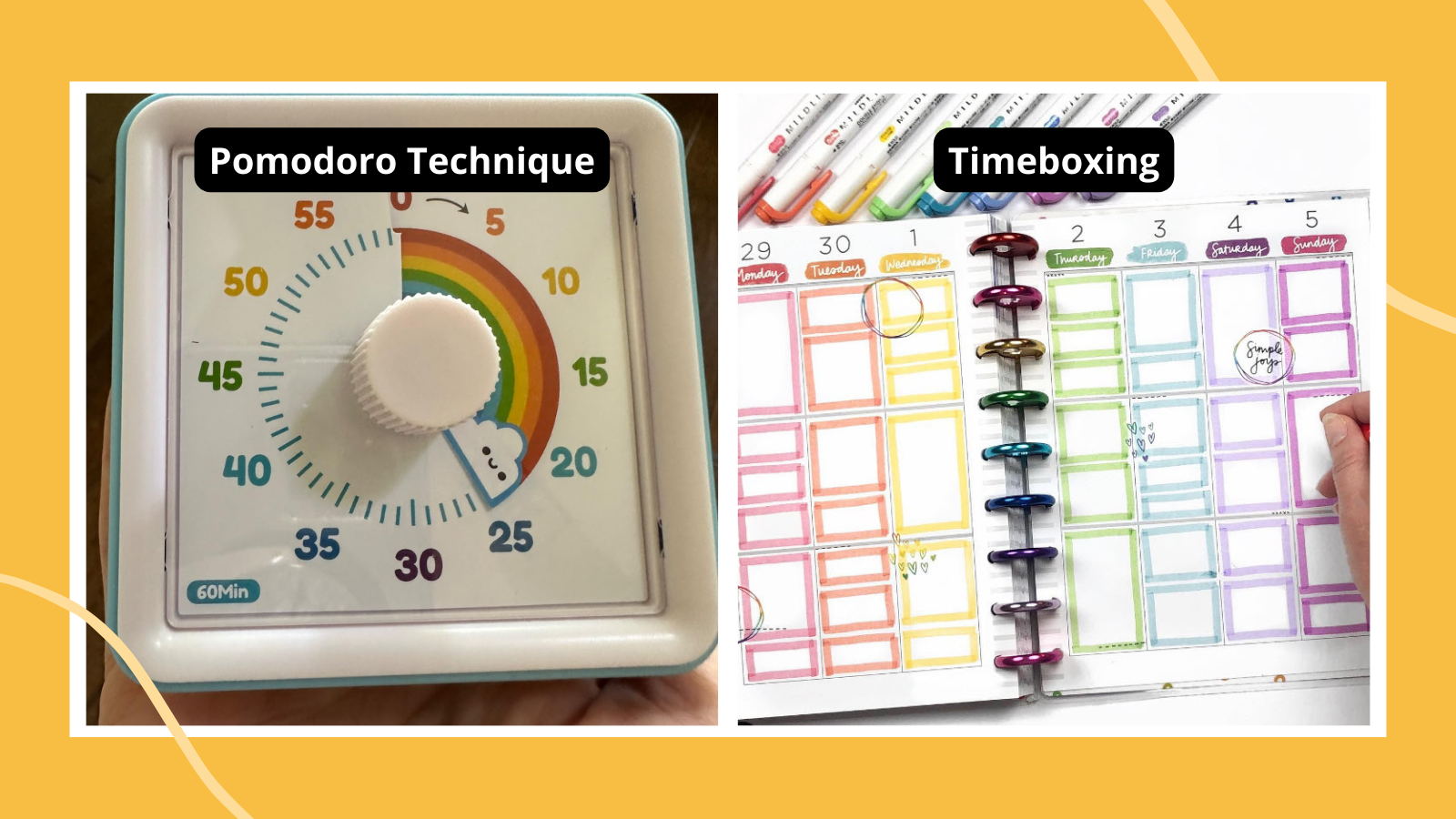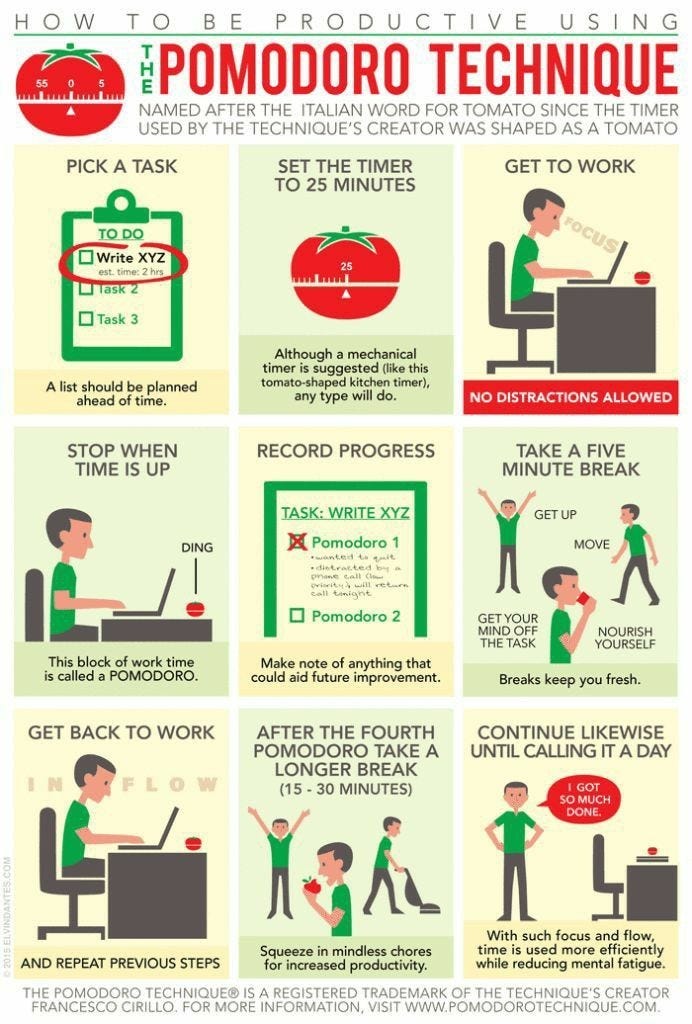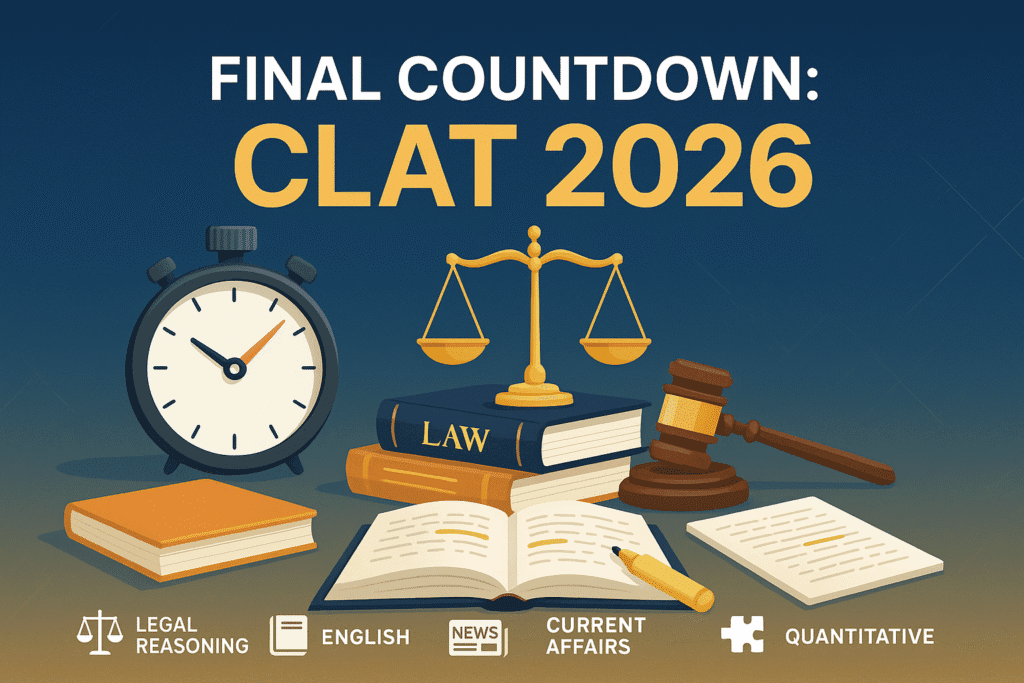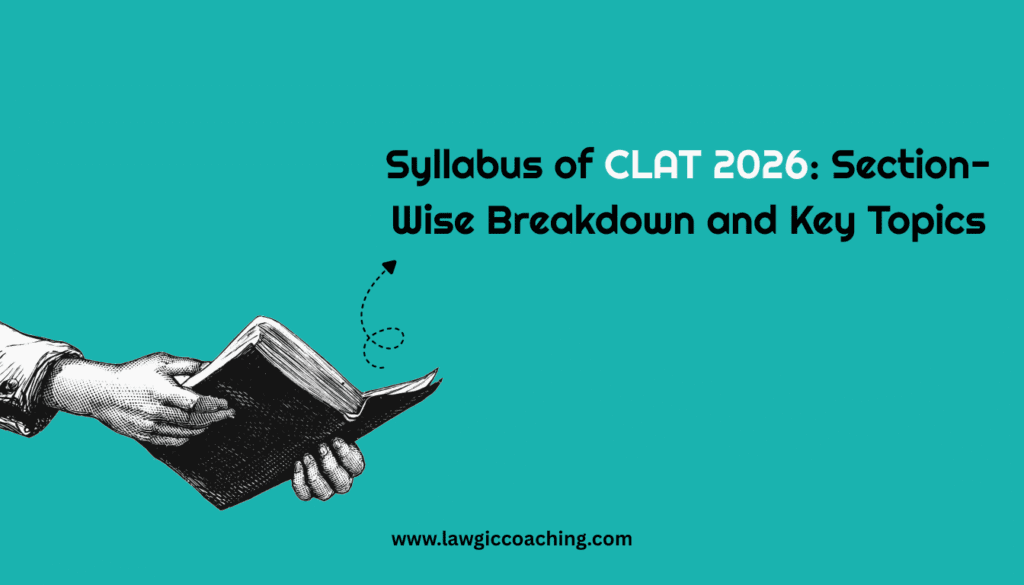Critical Alert: With CLAT 2026 scheduled for December 7, 2025, every moment counts. This comprehensive guide reveals advanced strategies, including Last Minute CLAT Preparation Strategies, that go beyond generic advice, incorporating psychological insights and topper-tested methods to maximize your performance in the final stretch.
CLAT 2026: Key Changes and Strategic Adaptations
Understanding the latest exam pattern and recent trends is crucial for optimization. Here’s what you need to know about CLAT 2026 specifically:
CLAT 2026 Pattern Analysis
| Section | Questions | Recent Trend Changes | Strategic Adaptation |
|---|---|---|---|
| Legal Reasoning | 28-32 | Increased focus on constitutional law and recent judgments | Prioritize Supreme Court decisions from 2024-2025 |
| English Language | 22-26 | More analytical passages, less vocabulary-focused | Practice editorial analysis and argument structure |
| Current Affairs | 28-32 | Greater emphasis on legal and governmental developments | Focus on policy changes, legal reforms, judicial appointments |
| Logical Reasoning | 22-26 | Complex multi-layered reasoning problems increasing | Practice assumption and strengthening/weakening extensively |
| Quantitative | 10-14 | More data interpretation, less pure computation | Focus on graph reading and percentage analysis |
Latest Intel: CLAT 2025 showed increased difficulty in Legal Reasoning and more passage-based questions across sections. Expect this trend to continue in 2026. Adjust your preparation accordingly by focusing more on comprehension skills than memorization.
The final countdown to CLAT 2026 doesn’t have to be a frantic scramble. While most aspirants resort to panic-driven cramming, successful candidates employ strategic, psychology-backed approaches that optimize both learning and performance. This guide unveils the sophisticated last-minute preparation methodology used by CLAT toppers and backed by cognitive science research.
Embrace these Last Minute CLAT Preparation Strategies to boost your confidence and performance as the exam approaches.

The Psychology of Peak Performance Under Pressure
Research from American Psychological Association reveals that optimal performance occurs when anxiety is channeled constructively rather than eliminated. This section addresses the psychological dimension that most preparation guides overlook.
Cognitive Load Management
The 3-2-1 Mental Framework
3 weeks before: Focus on macro-level revision and pattern recognition
2 weeks before: Shift to micro-level precision and speed optimization
1 week before: Enter maintenance mode with confidence-building activities
Unlike traditional approaches that maintain consistent intensity, this framework aligns with your brain’s natural learning curves and stress response patterns. The key insight: your brain needs different types of stimulation at different proximity levels to the exam.
Psychological Hack: Create a “confidence anchor” – a specific phrase, gesture, or visualization that you associate with your best practice test performances. Use this anchor during the actual exam to trigger peak state.
Overcoming Decision Fatigue
Decision fatigue significantly impacts exam performance, yet it’s rarely addressed in preparation guides. By exam day, you’ll have made thousands of micro-decisions. Here’s how to preserve your decision-making capacity:
- Pre-decide your section sequence: Don’t waste mental energy deciding which section to tackle first
- Create automatic triggers: “If I’m stuck for 90 seconds, I move on” removes in-the-moment decision stress
- Standardize your environment: Use the same pen type, sitting position, and pre-exam routine
Advanced Time Architecture for CLAT Success
Time management in CLAT isn’t just about allocation – it’s about creating a sophisticated temporal architecture that maximizes cognitive efficiency. This goes far beyond the basic “spend X minutes per section” advice.

The Dynamic Time Allocation System
Traditional time management advice fails because it assumes static performance across sections. The Dynamic Time Allocation System adapts to your real-time performance and energy levels.
| Section | Optimal Time Range | Energy State Required | Cognitive Load |
|---|---|---|---|
| Legal Reasoning | 28-35 minutes | High Focus | High |
| English Language | 22-28 minutes | Medium | Medium |
| Current Affairs & GK | 15-20 minutes | Medium | Low |
| Logical Reasoning | 25-30 minutes | High Focus | High |
| Quantitative Techniques | 8-12 minutes | Medium | Medium |
| Buffer & Review | 10-15 minutes | Variable | Low |
Advanced Strategy: The “Energy State Required” column is crucial. Start with high cognitive load sections when your mental energy is peak, then transition to lower-load sections as fatigue sets in.
The Pomodoro-Adapted Exam Technique
Adapted from the Pomodoro Technique, this method creates micro-breaks within the exam to maintain peak cognitive performance:
- Every 25 minutes: Take a 30-second mental break (deep breath, shoulder roll)
- Between sections: 1-minute reset ritual (specific breathing pattern)
- Mid-exam checkpoint: 2-minute strategic assessment
Section-Wise Optimization: Beyond Basic Strategies
While most guides provide generic section advice, this section reveals advanced optimization techniques based on cognitive science and topper analysis.
Legal Reasoning: The Pattern Recognition Advantage
The LRAC Method (Last-Minute Legal Reasoning)
L – Legal Principle Identification (15 seconds max)
R – Rapid Case Analysis (30 seconds)
A – Answer Pattern Matching (20 seconds)
C – Confidence Check (10 seconds)
The key insight: Legal reasoning questions follow predictable patterns. In your final preparation, focus on pattern recognition rather than legal knowledge acquisition. Master advanced legal reasoning techniques through our comprehensive program.
Topper Secret: Create a mental “legal reasoning flowchart” with 5-7 common question types. During the exam, quickly categorize each passage into one of these types before reading the questions.
English Language: Cognitive Shortcuts for Comprehension
English comprehension in CLAT isn’t about vocabulary – it’s about rapid meaning extraction. Here are advanced techniques:
- The Topic Sentence Strategy: 80% of passage meanings are contained in topic sentences (first sentence of each paragraph)
- Question-First Reading: Read questions before passages to create cognitive anchors
- The Elimination Acceleration: Develop ability to eliminate 2 options within 10 seconds of reading them
Speed Reading for CLAT: The 300-WPM Target
Average reading speed: 200-250 WPM
CLAT success reading speed: 300+ WPM with 85% comprehension
Last-minute training: Practice reading news editorials at increasing speeds while maintaining comprehension. Use online speed reading tools for rapid improvement.
Current Affairs & GK: The Strategic Memory Palace
Instead of random fact cramming, create a systematic memory architecture:
- Geographic Memory Palace: Associate facts with familiar locations
- Timeline Visualization: Create visual timelines for major events from July 2024 – November 2025
- Connect-the-Dots Strategy: Link related facts across different domains (politics, economy, international relations)
Critical Alert: Don’t attempt to learn new GK topics in the final week. Focus on consolidating and connecting existing knowledge through our comprehensive current affairs program.
Logical Reasoning: The Systematic Elimination Protocol

Logical reasoning success depends on systematic approaches rather than intuitive leaps:
The SEAL Method for Logical Reasoning
S – Scan for keywords and logical connectors
E – Eliminate obviously wrong options first
A – Apply logical rules systematically
L – Lock in your answer without second-guessing
Quantitative Techniques: The Precision Speed Balance
Quantitative techniques can be your scoring goldmine if approached correctly:
- Mental Math Mastery: Practice calculations up to 25² and percentage conversions
- Formula Sheet Internalization: Create mental shortcuts for ratio, proportion, and percentage problems
- Graph Reading Efficiency: Develop ability to extract key information from charts within 30 seconds
The Anti-Pattern Strategy: What NOT to Do
Understanding what to avoid is as crucial as knowing what to do. Based on analysis of common failures, here are critical anti-patterns:
Psychological Anti-Patterns
Avoid These Mental Traps:
- Perfectionist Paralysis: Spending excessive time on single questions
- Confidence Cascading: Letting one difficult section affect performance in subsequent sections
- Comparative Anxiety: Worrying about other students’ progress during the exam
- Strategy Switching: Changing your approach mid-exam due to panic
Technical Anti-Patterns
- Random Section Jumping: Switching between sections without completing one
- Over-Revision Syndrome: Continuously changing correct answers during review
- Time Sink Questions: Spending more than 2 minutes on any single question
- Panic Reading: Re-reading passages multiple times due to anxiety
Topper-Revealed Secrets: The Insider Advantage
These strategies come from detailed interviews with CLAT toppers who scored above 120 marks:
The “Confidence Calibration” Technique
Week-by-Week Confidence Building
3 weeks before: Take one mock daily, focus on attempt strategy rather than scores
2 weeks before: Solve previous year papers under timed conditions
1 week before: Light practice with emphasis on maintaining confidence
Day before: Complete relaxation, light revision of formulae only
The “Strategic Sacrifice” Method
Top performers understand that trying to attempt everything perfectly leads to overall poor performance. They employ strategic sacrifice:
- Identify your weakest 10-15%: Don’t waste time on questions you’re least likely to solve
- Create attempt targets: Aim for 85-90% attempt rate with 80%+ accuracy
- Time budgeting: Never spend more than your allocated time per section
Topper Insight: “I aimed to confidently attempt 100-105 questions with high accuracy rather than struggling through all 120 questions. This strategy helped me score 126 marks.” – CLAT 2025 Topper
D-Day Execution: The Perfect Game Plan
Your exam day performance depends on flawless execution of your preparation. Here’s the hour-by-hour game plan:
Pre-Exam Protocol (6 AM – 1 PM)
| Time | Activity | Purpose |
|---|---|---|
| 6:00 AM | Wake up, light exercise | Activate circulation, reduce anxiety |
| 7:00 AM | Nutritious breakfast | Stable blood sugar for sustained focus |
| 8:00 AM | Light revision (formulae, key facts) | Warm up cognitive processes |
| 10:00 AM | Final document check, travel preparation | Eliminate last-minute stress |
| 11:30 AM | Arrive at exam center | Familiarize with environment |
| 12:30 PM | Relaxation techniques, positive visualization | Enter optimal performance state |
In-Exam Execution Strategy
The First 10 Minutes Protocol
- Minutes 1-2: Read all instructions carefully, fill basic details
- Minutes 3-4: Quick scan of entire paper to assess difficulty distribution
- Minutes 5-6: Identify your starting section (usually your strongest)
- Minutes 7-10: Begin with 2-3 easy questions to build momentum
The Section Transition Strategy
How you transition between sections can make or break your performance:
- Pause and Breathe: Take 30 seconds between sections to reset
- Mental State Check: Assess your confidence and energy levels
- Strategy Adjustment: Modify time allocation based on previous section performance
- Positive Reinforcement: Acknowledge successful completions
Emergency Protocols: When Things Go Wrong
Every exam has unexpected challenges. Here’s how to handle common crisis situations:
Time Shortage Crisis
If you’re running behind schedule:
- Don’t panic: Stress will only slow you down further
- Switch to rapid-fire mode: Attempt questions you can solve in under 60 seconds
- Strategic guessing: Use elimination for remaining questions
- Fill all bubbles: Never leave questions unattempted unless negative marking is severe
Anxiety Overload
If anxiety becomes overwhelming during the exam:
- 4-7-8 Breathing: Inhale for 4 counts, hold for 7, exhale for 8
- Grounding Technique: Name 5 things you can see, 4 you can hear, 3 you can touch
- Positive Self-Talk: Use pre-prepared affirmations
- Temporary Exit: If allowed, take a brief bathroom break to reset
Final Week Countdown: Day-by-Day Action Plan
Your final week should follow a carefully structured de-escalation pattern:
7 Days to CLAT Success
Day 7 (Sunday):
- Complete one full-length mock test
- Detailed analysis of mistakes
- Light evening review of weak areas
Day 6 (Monday):
- Section-wise practice (focus on timing)
- Revision of current affairs from last 4 months
- Formula and key facts consolidation
Day 5 (Tuesday):
- Previous year paper solving
- English comprehension speed practice
- Legal reasoning pattern recognition
Day 4 (Wednesday):
- Mixed practice from all sections
- Time management strategy refinement
- Exam day logistics planning
Day 3 (Thursday):
- Light practice (60% of usual volume)
- Review of key concepts and shortcuts
- Relaxation and confidence building
Day 2 (Friday):
- Quick revision of important topics
- Exam center visit if possible
- Early sleep preparation
Day 1 (Saturday):
- Light formula revision only
- Document preparation and checking
- Complete relaxation and early sleep
Mental Health and Peak Performance Psychology
The final weeks before CLAT can trigger intense psychological stress. Understanding and managing this stress is crucial for optimal performance. Research from cognitive psychology studies shows that specific mental priming techniques can improve performance by 15-20%.
Recognizing and Managing Pre-Exam Anxiety
Normal vs. Concerning Anxiety Levels:
Normal: Occasional worry, mild sleep disruption, increased focus on studies
Concerning: Persistent insomnia, panic attacks, complete loss of appetite, inability to concentrate
If experiencing concerning symptoms, consider speaking with a counselor or using professional support services.
The Stress-Performance Optimization Curve
Moderate stress actually enhances performance (Yerkes-Dodson Law). The goal isn’t to eliminate stress but to optimize it:
- Under-arousal: Leads to complacency and reduced focus
- Optimal arousal: Sharp focus, quick thinking, confident decision-making
- Over-arousal: Anxiety paralysis, poor judgment, memory blocks
Daily Stress Regulation Protocol
Morning (Activation):
- 10 minutes of light exercise or yoga
- Positive affirmations and goal setting
- Energizing breakfast with complex carbs
Study Sessions (Maintenance):
- 50-minute focused work + 10-minute break cycles
- Brief meditation or breathing exercises between topics
- Hydration and healthy snacking
Evening (Wind-down):
- No study material 2 hours before bed
- Gentle stretching or relaxation exercises
- Limit screen time and news consumption
The Success Mindset: Psychological Priming for Peak Performance
Visualization Protocol
Daily Visualization Exercise (15 minutes):
- Visualize yourself entering the exam hall confidently
- See yourself reading questions calmly and accurately
- Imagine completing sections within time limits
- Visualize the satisfaction of finishing the exam successfully
Cognitive Anchoring
Create positive associations with exam-taking through these techniques:
- Success Scent: Use the same mild fragrance during practice and exam
- Power Posture: Maintain confident body language throughout
- Positive Mantras: Develop personal affirmations for challenging moments
- Victory Gesture: A subtle gesture you associate with correct answers
Nutrition and Physical Optimization
Your brain’s performance is directly linked to your physical state. Follow these evidence-based guidelines:
Pre-Exam Nutrition Strategy
| Timing | Recommended Foods | Avoid |
|---|---|---|
| 1 week before | Complex carbs, omega-3 rich foods, nuts | Excessive caffeine, processed foods |
| Night before | Light dinner, herbal tea, tryptophan-rich foods | Heavy meals, alcohol, excessive water |
| Exam morning | Balanced breakfast, moderate caffeine | New foods, excessive sugar, empty stomach |
Advanced Mock Test Analysis: Beyond Just Scores
Most students check their mock test scores and move on. Toppers analyze patterns that reveal optimization opportunities:
The 5-Dimensional Mock Analysis Framework
1. Time Distribution Analysis:
- Which sections consume disproportionate time relative to marks earned?
- Identify “time sink” question types for strategic avoidance
- Calculate your “marks per minute” ratio for each section
2. Error Pattern Recognition:
- Silly mistakes vs. knowledge gaps vs. strategic errors
- Are errors clustered in specific topics or question positions?
- Do errors increase with fatigue (later questions)?
3. Confidence Calibration:
- Track questions you were “sure” about but got wrong
- Identify overconfidence patterns in specific sections
- Measure the accuracy of your “difficulty assessment” during the test
4. Attempt Strategy Optimization:
- Should you attempt more questions with lower accuracy?
- Or fewer questions with higher precision?
- What’s your optimal attempt rate for maximum score?
5. Mental State Tracking:
- At what point do you feel mentally fatigued?
- Which sections benefit from your “peak” mental state?
- How does section order affect your overall performance?
Actionable Insight: Keep a “Mock Analysis Journal” – spend 30 minutes after each mock test documenting these patterns. This data becomes your personalized strategy guide for the actual exam.
Critical Mistake Patterns to Eliminate
Analysis of thousands of CLAT attempts reveals recurring mistake patterns. Eliminating these can boost your score by 10-15 marks:
High-Frequency Mistake Patterns
Pattern 1: The “Almost Right” Trap
Students select options that are factually correct but don’t answer the specific question asked. Solution: Always re-read the question stem before finalizing your answer.
Pattern 2: Time Pressure Errors
Accuracy drops dramatically in the final 30 minutes due to time pressure. Solution: Practice “speed bursts” – solve 10 questions in 8 minutes during preparation.
Pattern 3: Section Transition Disorientation
Performance dips immediately after switching sections. Solution: Develop a 30-second “reset ritual” between sections.
Pattern 4: Overconfidence in Familiar Topics
Students make careless errors in their strongest subjects due to overconfidence. Solution: Maintain the same level of caution across all sections.
Section-Specific Critical Errors
| Section | Most Common Error | Prevention Strategy |
|---|---|---|
| Legal Reasoning | Mixing legal principle with personal judgment | Always ask: “What does the principle state?” not “What seems fair?” |
| English | Choosing extreme or absolute answer options | CLAT favors moderate, qualified answers over extreme positions |
| Current Affairs | Confusing similar events or dates | Create mental “event clusters” with clear distinctions |
| Logical Reasoning | Making unstated assumptions | Base answers strictly on given information, not general knowledge |
| Quantitative | Calculation errors under time pressure | Double-check calculations for “easy” questions – they’re often trap questions |
Technology and Tools for Last-Minute Optimization
Leverage these digital tools for enhanced preparation efficiency:
- Spaced Repetition Apps: Use Anki for fact retention
- Focus Apps: Implement Pomodoro timers for structured study
- Speed Reading Tools: Practice with online speed reading applications
- Mock Test Platforms: Regular practice with comprehensive mock test series
- Performance Analytics: Track your improvement metrics with data-driven insights
- Meditation Apps: Use guided meditation for anxiety management
Conclusion: Your Path to CLAT Excellence
Success in CLAT 2026 isn’t about perfection – it’s about strategic optimization of your existing knowledge and skills. The strategies outlined in this guide represent a synthesis of cognitive science, topper insights, and practical wisdom accumulated over years of CLAT coaching excellence.
Remember: The final countdown is not about learning everything – it’s about optimizing everything you’ve learned. Trust your preparation, execute your strategy with confidence, and approach the exam as an opportunity to showcase your capabilities rather than a test of your limitations.
Your success in CLAT 2026 begins with implementing these strategies systematically. Every aspirant has access to the same syllabus and question papers, but only those who master the psychological and strategic dimensions will emerge victorious.
For comprehensive support in your CLAT journey, explore our expert coaching programs designed to transform aspirants into confident law school candidates.
Post-Exam Strategy and Backup Planning
Smart preparation includes planning for various outcomes. Here’s how to maintain momentum regardless of your CLAT performance:
Immediate Post-Exam Protocol
The 48-Hour Recovery Plan
Day 1 (Exam Day Evening):
- Complete disconnection from CLAT discussions and answer key analysis
- Engage in relaxing activities – movie, music, time with family
- Early sleep to recover from exam stress
Day 2 (Day After):
- Continue avoiding answer key comparisons (they’re often inaccurate)
- Light physical activity to release tension
- Begin thinking about next steps without obsessing over performance
Parallel Planning: Multiple Paths to Success
Regardless of CLAT results, maintain multiple pathways to your legal career goals:
- State Law Entrance Exams: Many excellent state universities offer quality legal education
- Private Law Schools: Research well-regarded private institutions with good placement records
- Alternative Legal Careers: Corporate law firms, legal consulting, legal journalism
- Gap Year Planning: If needed, structured preparation for CLAT 2027 with specialized gap year programs
Important Perspective: Your success in the legal profession depends far more on your dedication, ethics, and continuous learning than on which law school you attend. CLAT is one path among many to a successful legal career.
Final Words: As you enter the exam hall on December 7, 2025, remember that you are not just taking a test – you are claiming your rightful place in India’s premier law schools. Approach every question with the confidence of someone who has prepared not just intellectually, but psychologically and strategically. Your future in law awaits, and this exam is just the beginning of an extraordinary journey.
Best wishes for your CLAT 2026 success from the entire team at LawGic Coaching. May your preparation translate into the results you deserve.


